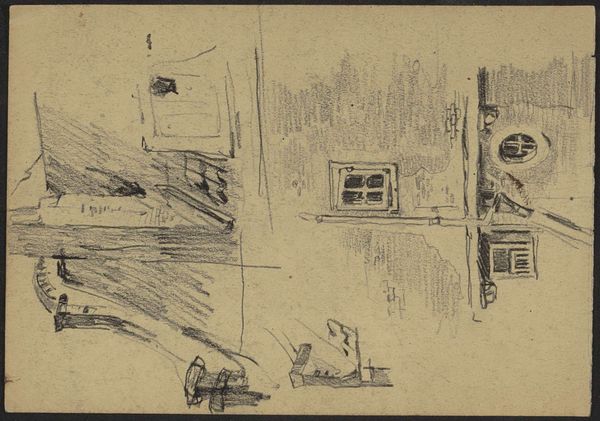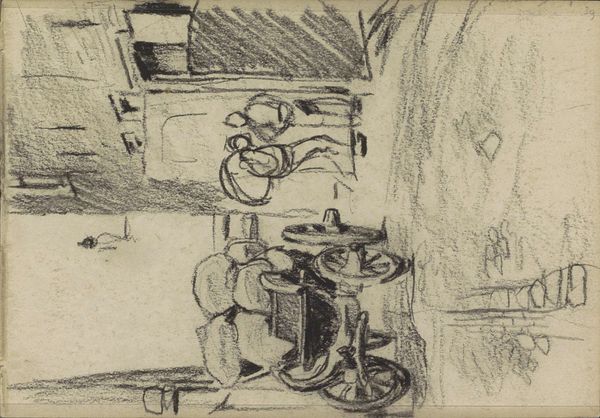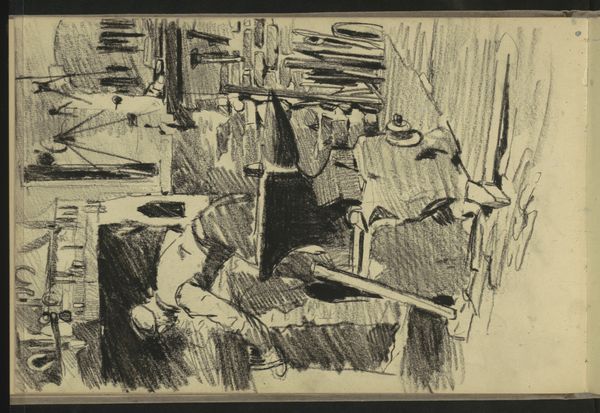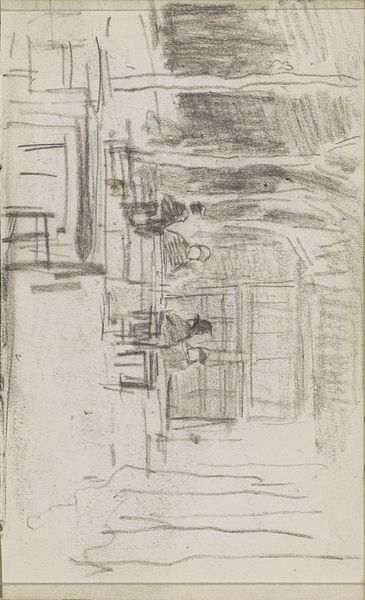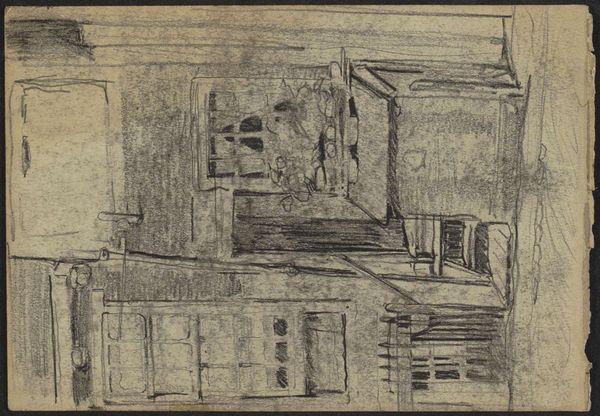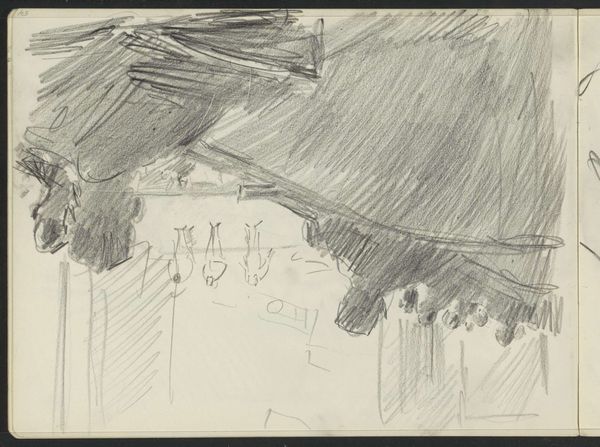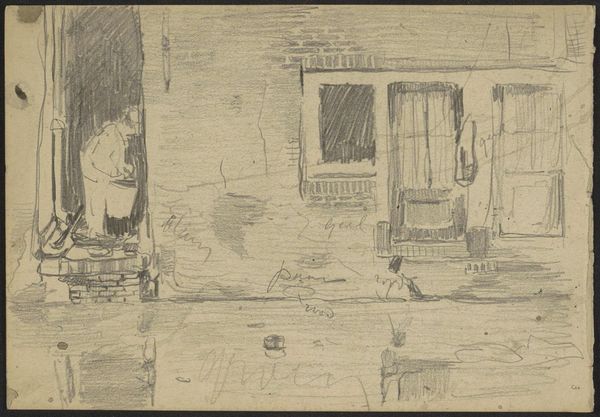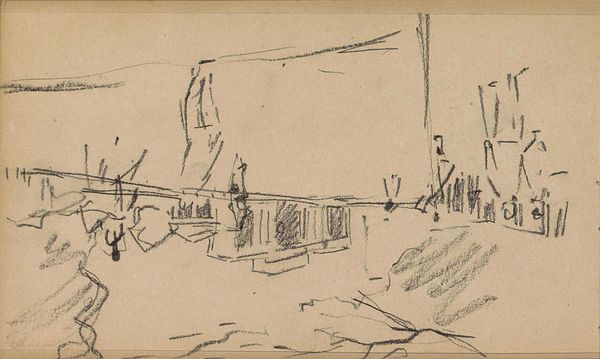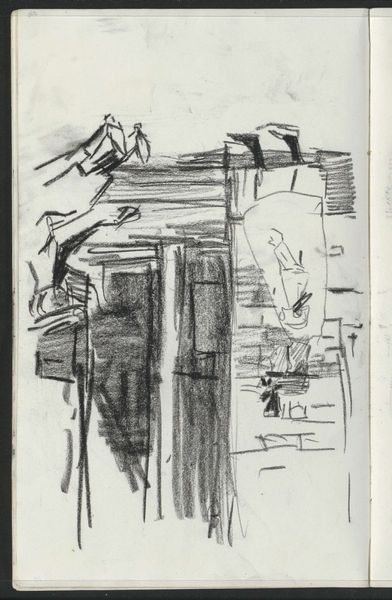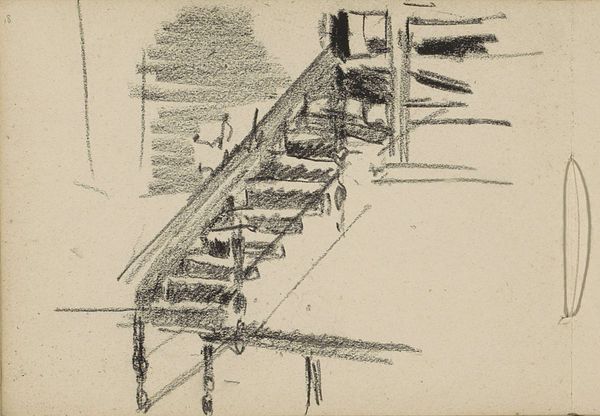
drawing, paper, ink
#
drawing
#
ink drawing
#
paper
#
ink
#
cityscape
#
realism
Dimensions: height 140 mm, width 201 mm
Copyright: Rijks Museum: Open Domain
Editor: This is Willem Witsen's "Façade van Krom Boomssloot 71 in Amsterdam," created before 1909, using ink on paper. It's currently held at the Rijksmuseum. The drawing style gives the image a rather bleak atmosphere, portraying this city building as tired or even alienated. What's your take on it? Curator: The "bleakness," as you say, strikes me as a reflection of broader social anxieties at the time. This drawing, seemingly a simple cityscape, can be interpreted as a quiet critique of urban life during rapid industrialization. Witsen, like many artists of his time, was grappling with the changing face of cities and their impact on the lives of ordinary people. Editor: That makes me see it in a different light. It feels like a visual commentary. Curator: Exactly. The somber tones and meticulous detail emphasize the building's materiality, reminding us of the human labor and social structures embedded within the urban environment. Does it bring to mind any specific ideas related to labour or urban studies? Editor: Thinking about labor and cities, maybe this hints at the lives of the working class who were probably living in that neighbourhood at that time. And that the city grew on the shoulders of these nameless, faceless individuals. Curator: Precisely! Consider also how the realism style, while seemingly objective, serves to heighten the emotional impact. Witsen’s choice to portray this building so directly forces us to confront the realities of urban existence and maybe critique power structures in urban space. Editor: I didn’t consider how the choice of style contributes to the social narrative. I initially saw a cityscape; now, I see social commentary. Curator: That’s the power of art! It allows us to reflect on ourselves, society, and our place within history. Hopefully, this analysis helps our listeners engage more critically with art’s role in understanding our world.
Comments
No comments
Be the first to comment and join the conversation on the ultimate creative platform.

